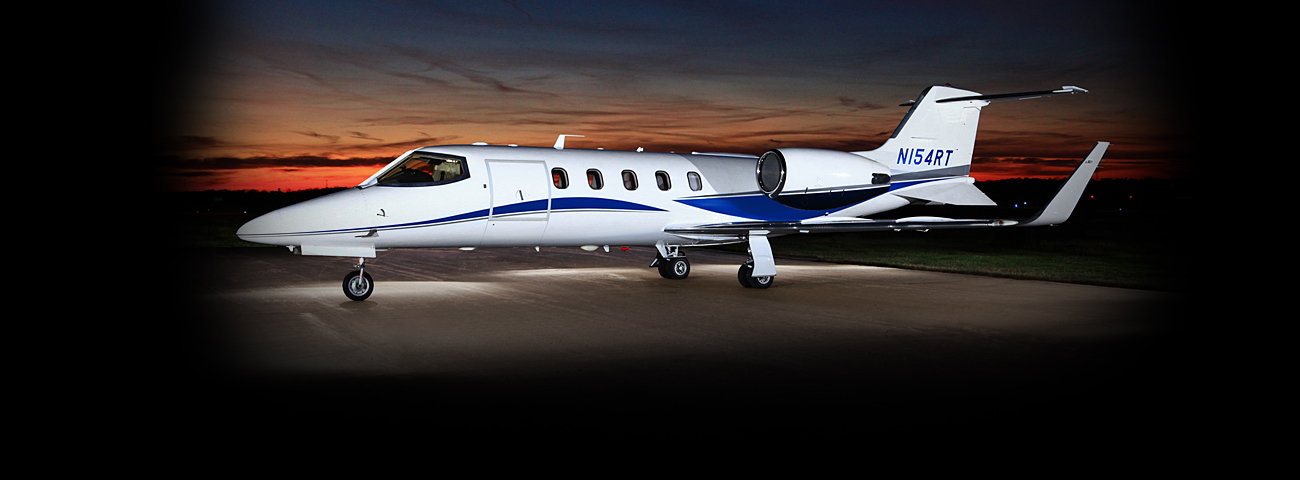1991 - 2002 Lear 31A


The Learjet 31 series of airplanes is essentially a Learjet 35 with a new 4-foot longer wing with almost four-foot high winglets instead of wingtip fuel tanks and large 'delta fins' attached to the tail cone. Essentially combining the fuselage and engines of the model 35/36 with the 'Longhorn wing' of the 28, 29 and 50 models, results in performance which is equaled by few aircraft. Normal cruise altitudes range from 41,000 to 47,000 feet (12,500-14,900 m) and the aircraft's maximum cruise altitude of 51,000 feet (15,500 m) is a distinction shared by only a handful of civil aircraft. These changes made the plane a much more docile one to fly, greatly improved field lengths and added 6 kts., to its normal cruise speed. Seats full range decreased to 1,225 nm plus NBAA IFR fuel reserves. The Learjet 31 won its Supplemental Type Certificate (STC) in 1988. The 31A got its STC in 1991. The Learjet 31A was announced in 1990 as a replacement after building 38 Learjet 31's. Note, the last six 31's, 31-033, 31-033A, 31-033B, 31-033C, 31-033D, 31-034 were equipped with Honeywell avionics systems for Singapore Airlines flight training and have a unique cockpit. The model 31A boasted numerous modifications, however the most notable changes would take place on the flight deck. Key modifications and updates to the model 31A cockpit and avionics include; a Bendix King (now Honeywell after the merger with Allied Signal) Electronic Flight Information System 50, with Universal 1M, 1B and 1C flight management system, a dual KFC 3100 two-axis autopilot and flight director with yaw damper, and dual Bendix King (Radios sold to Chelton Avionics when Allied Signal combined with Honeywell) VCS-40A com units, VN-411B Series III navigation receivers. The 31A has a 1,450 pound higher Ramp Weight for more payload with full fuel. The Learjet 31A/ER has an optional extended range kit installed which adds 275 nm to the airplanes range. In the year 2000 the Learjet 31A was again revised. Takeoff and landing weights were increased. The engines received a digital control (FADEC), the thrust reversers became standard equipment. The air conditioning system was divided in 2 zones, cockpit and cabin.

Aircraft Information
| Year: |
1991 - 2002 |
| Make: |
Lear |
| Model: |
31A |
| Active Fleet: |
207 - For Sale/Lease: 43
|
| Average Asking Price - February 2014: |
$1,455,000 |
| Range: |
1,211 - 1,337 nm |
| Contact Number: |
1-847-726-5000 |
| Current Market Price / Availability: |
REQUEST MARKET UPDATE REPORT |
General Performance & Specifications
| Cabin Height: |
4.35 Feet |
| Cabin Width: |
4.95 Feet |
| Cabin Length: |
12.90 Feet |
| Baggage Volume Internal: |
40.0 Cubic Feet |
| Seats Executive: |
*2/6 |
| Max. Take-Off Weight: |
17,200 lbs. |
| Max. Landing Weight: |
16,000 lbs. |
| Maximum Payload: |
2,297 lbs. |
| Balance Field Length: |
3,800 Feet |
| Landing Distance: |
4,786 Feet |
| Rate of Climb - All Engines: |
5,110 Feet / Minute |
| Rate of Climb - One Engine Out: |
1,610 Feet / Minute |
| Normal Cruise Speed: |
441 ktas |
| Max. Cruise Speed: |
462 ktas |
| Service Ceiling Max. Weight: |
46,200 Feet |
| Number of Engines: |
2 |
| Engine Manufacturer: |
Honeywell |
| Engine Model: |
TFE 731-2 |
Description
The Learjet 31 series of airplanes is essentially a Learjet 35 with a new 4-foot longer wing with almost four-foot high winglets instead of wingtip fuel tanks and large 'delta fins' attached to the tail cone. Essentially combining the fuselage and engines of the model 35/36 with the 'Longhorn' wing of the 28, 29 and 50 models, results in performance which is equaled by few aircraft. Normal cruise altitudes range from 41,000 to 47,000 feet (12,500-14,900 m) and the aircraft's maximum cruise altitude of 51,000 feet (15,500 m) is a distinction shared by only a handful of civil aircraft. These changes made the plane a much more docile one to fly, greatly improved field lengths and added 6 kts., to its normal cruise speed. Seats full range decreased to 1,225 nm plus NBAA IFR fuel reserves. The Learjet 31 won its Supplemental Type Certificate (STC) in 1988. The 31A got its STC in 1991. The Learjet 31A was announced in 1990 as a replacement after building 38 Learjet 31's. Note, the last six 31's, 31-033, 31-033A, 31-033B, 31-033C, 31-033D, 31-034 were equipped with Honeywell avionics systems for Singapore Airlines flight training and have a unique cockpit. The model 31A boasted numerous modifications, however the most notable changes would take place on the flight deck. Key modifications and updates to the model 31A cockpit and avionics include; a Bendix King (now Honeywell after the merger with Allied Signal) Electronic Flight Information System 50, with Universal 1M, 1B and 1C flight management system, a dual KFC 3100 two-axis autopilot and flight director with yaw damper, and dual Bendix King (Radios sold to Chelton Avionics when Allied Signal combined with Honeywell) VCS-40A com units, VN-411B Series III navigation receivers. The 31A has a 1,450 pound higher Ramp Weight for more payload with full fuel. The Learjet 31A/ER has an optional extended range kit installed which adds 275 nm to the airplanes range. In the year 2000 the Learjet 31A was again revised. Takeoff and landing weights were increased. The engines received a digital control (FADEC), the thrust reversers became standard equipment. The air conditioning system was divided in 2 zones, cockpit and cabin.
















